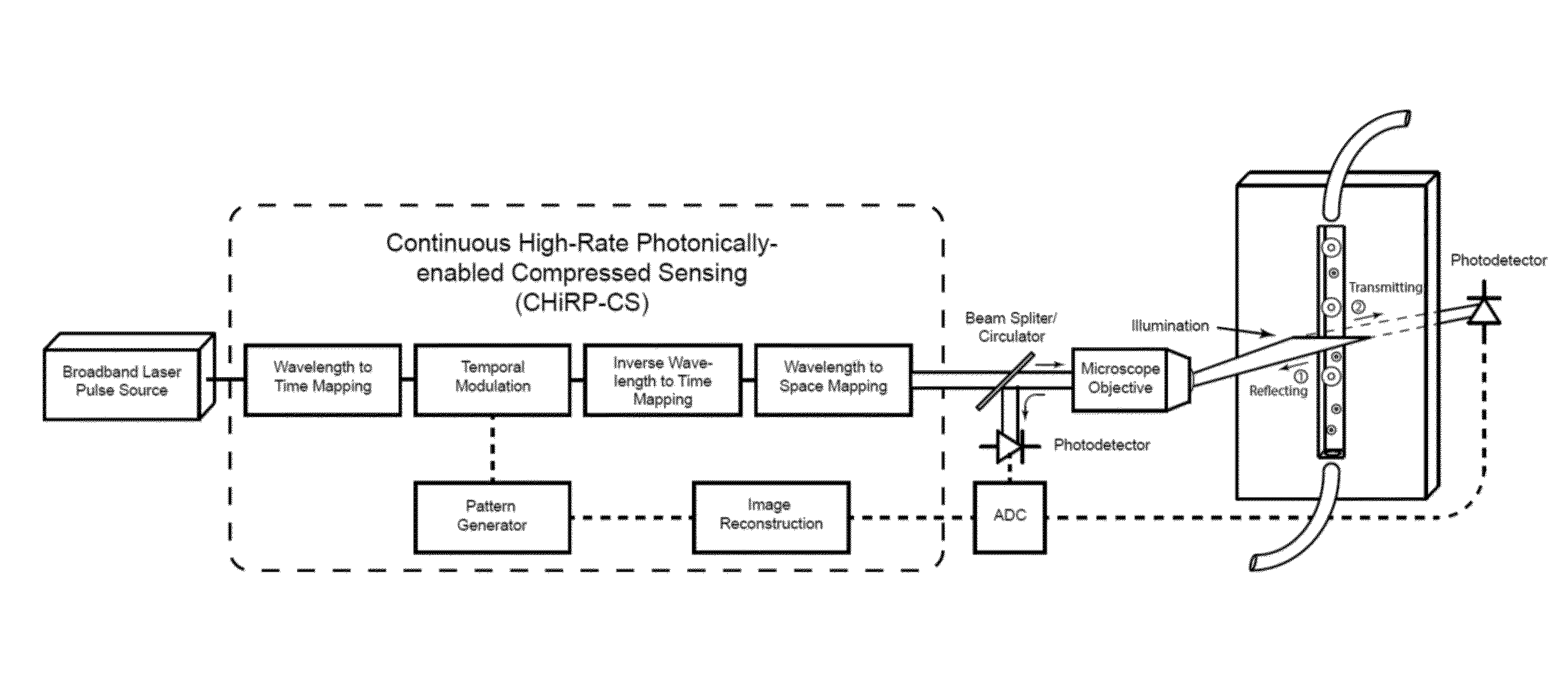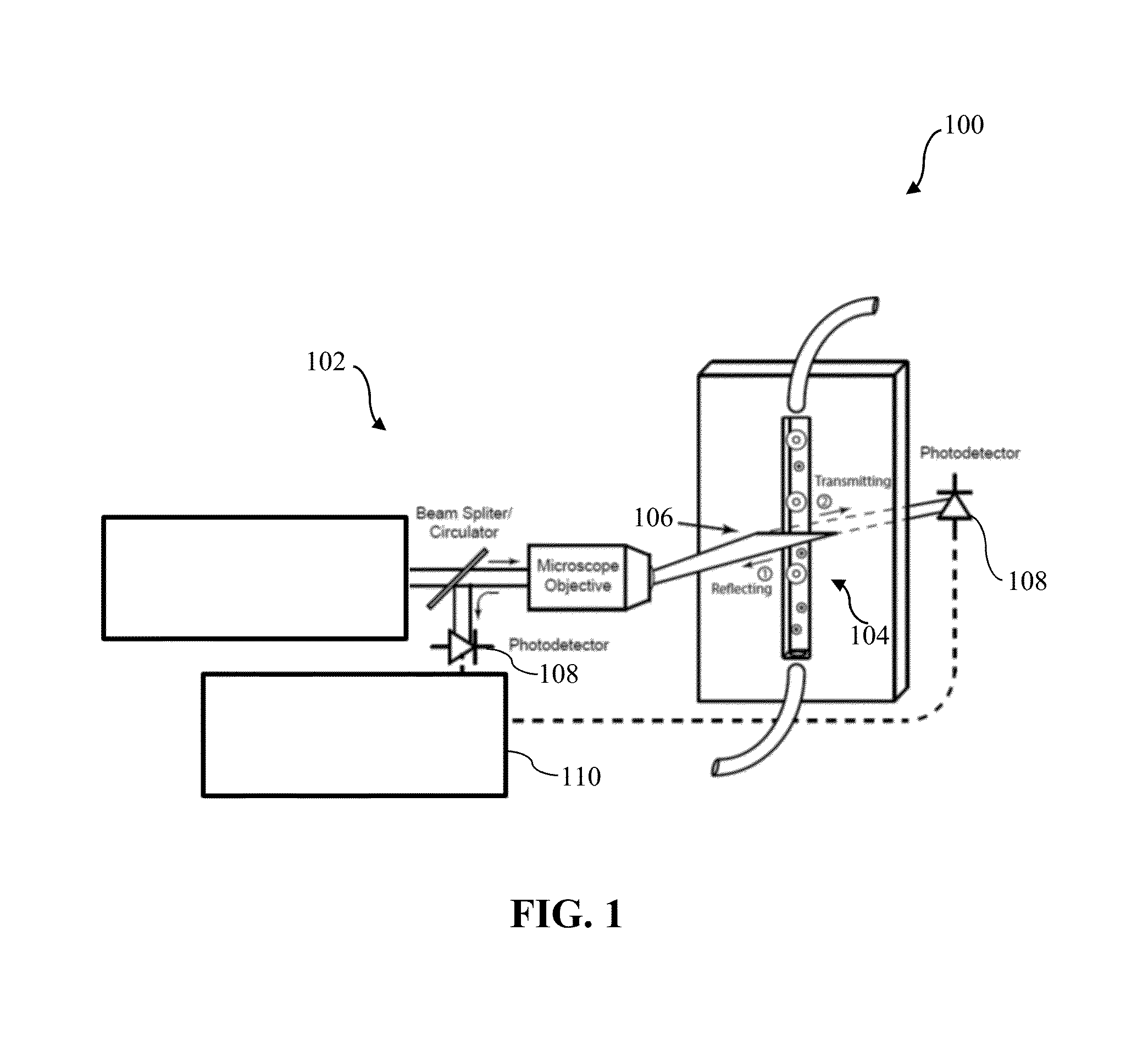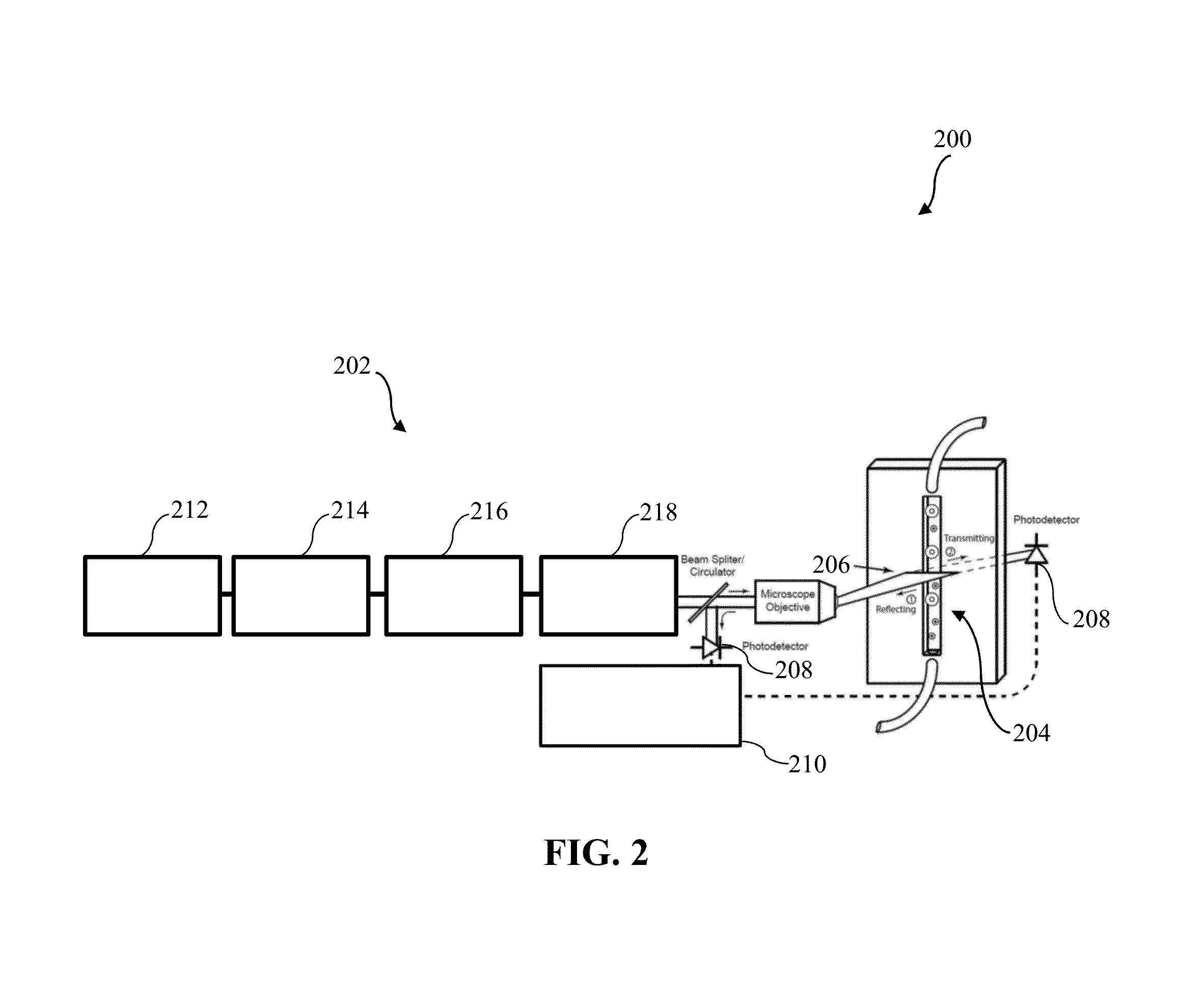Compressive imaging systems and methods
a compression imaging and imaging system technology, applied in the field of compression imaging systems, can solve the problems of limiting the potential operating rate of cutting-edge ultrahigh-speed imaging systems, limiting the speed, resolution, image quality of approaches,
- Summary
- Abstract
- Description
- Claims
- Application Information
AI Technical Summary
Benefits of technology
Problems solved by technology
Method used
Image
Examples
example 1
[0092][1] Petty, H. R., “Spatiotemporal chemical dynamics in living cells: from information trafficking to cell physiology,” Biosystems 83(23), 217-224 (2006).
[0093][2] Lang, P., Yeow, K., Nichols, A., and Scheer, A., “Cellular imaging in drug discovery,” Nat. Rev. Drug Discov. 5(4), 343-356 (2006).
[0094][3] Brouzes, E., Medkova, M., Savenelli, N., Marran, D., Twardowski, M., Hutchison, J. B., Rothberg, J. M., Link, D. R., Perrimon, N., and Samuels, M. L., “Droplet microfluidic technology for single-cell high-throughput screening,” Proc. Natl. Acad. Sci. U.S.A. 106(34), 14195-14200 (2009).
[0095][4] Rimon, N. and Schuldiner, M., “Getting the whole picture: combining throughput with content in microscopy,” J. Cell Sci. 124(22), 3743-3751 (2011).
[0096][5] Weaver, W. M., Tseng, P., Kunze, A., Masaeli, M., Chung, A. J., Dudani, J. S., Kittur, H., Kulkarni, R. P., and Carlo, D. D., “Advances in high-throughput single-cell microtechnologies,” Curr. Opin. Biotechnol. 25(0), 114-123 (2014).
[...
example 2
[0166][1] H. R. Petty, “Spatiotemporal chemical dynamics in living cells: from information trafficking to cell physiology,” Biosystems 83, 217-224 (2006).
[0167][2] P. Lang, K. Yeow, A. Nichols, and A. Scheer, “Cellular imaging in drug discovery,” Nat. Rev. Drug Discov. 5, 343-356 (2006).
[0168][3] E. Brouzes, M. Medkova, N. Savenelli, D. Marran, M. Twardowski, J. B. Hutchison, J. M. Rothberg, D. R. Link, N. Perrimon, and M. L. Samuels, “Droplet microfluidic technology for single-cell high-throughput screening,” Proc. Natl. Acad. Sci. U.S.A. 106, 14195-14200 (2009).
[0169][4] K. Goda, A. Ayazi, D. R. Gossett, J. Sadasivam, C. K. Lonappan, E. Sollier, A. M. Fard, S. C. Hur, J. Adam, C. Murray, C. Wang, N. Brackbill, D. Di Carlo, and B. Jalali, “High-throughput single-microparticle imaging flow analyzer,” Proc. Natl. Acad. Sci. U.S.A. (2012).
[0170][5] N. Rimon and M. Schuldiner, “Getting the whole picture: combining throughput with content in microscopy,” J. Cell Sci. 124, 3743-3751 (201...
example 3
[0221][1] K. Goda, K. K. Tsia, and B. Jalali, “Serial time-encoded amplified imaging for real-time observation of fast dynamic phenomena.” Nature 458, 1145 (2009).
[0222][2] M. A. Davenport, M. F. Duarte, Y. C. Eldar, and G. Kutyniok, “Introduction to compressed sensing,” in “Com-pressed Sensing: Theory and Applications,”, Y. C. Eldar and G. Kutyniok, eds. (Cambridge University Press, 2012), pp. 1-68.
[0223][3] M. Duarte, M. Davenport, D. Takhar, J. Laska, T. Sun, K. Kelly, and R. Baraniuk, “Single-pixel imaging via compressive sampling,” Signal Processing Magazine, IEEE 25, 83-91 (2008).
[0224][4] G. C. Valley, G. A. Sefler, and T. J. Shaw, “Compressive sensing of sparse radio frequency signals using optical mixing,” Opt. Lett. 37, 4675-4677 (2012).
[0225][5] B. T. Bosworth and M. A. Foster, “High-speed ultrawideband photonically enabled compressed sensing of sparse radio frequency signals,” Opt. Lett. 38, 4892-4895 (2013).
[0226][6] E. J. Candès, J. K. Romberg, and T. Tao, “Stable sign...
PUM
 Login to View More
Login to View More Abstract
Description
Claims
Application Information
 Login to View More
Login to View More - R&D
- Intellectual Property
- Life Sciences
- Materials
- Tech Scout
- Unparalleled Data Quality
- Higher Quality Content
- 60% Fewer Hallucinations
Browse by: Latest US Patents, China's latest patents, Technical Efficacy Thesaurus, Application Domain, Technology Topic, Popular Technical Reports.
© 2025 PatSnap. All rights reserved.Legal|Privacy policy|Modern Slavery Act Transparency Statement|Sitemap|About US| Contact US: help@patsnap.com



